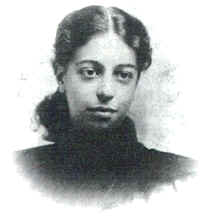
Angelina Weld Grimké was an African-American journalist, teacher, playwright, and poet.

Lorraine O'Grady is an American artist, writer, translator, and critic. Working in conceptual art and performance art that integrates photo and video installation, she explores the cultural construction of identity – particularly that of Black female subjectivity – as shaped by the experience of diaspora and hybridity. O'Grady studied at Wellesley College and the University of Iowa Writers' Workshop before becoming an artist at age forty-five. Regarding the purpose of art, O'Grady said in 2016: "I think art’s first goal is to remind us that we are human, whatever that is. I suppose the politics in my art could be to remind us that we are all human."

Augusta Savage was an American sculptor associated with the Harlem Renaissance. She was also a teacher whose studio was important to the careers of a generation of artists who would become nationally known. She worked for equal rights for African Americans in the arts.

Eulalie Spence was a writer, teacher, director, actress and playwright from the British West Indies. She was an influential member of the Harlem Renaissance, writing fourteen plays, at least five of which were published. Spence, who described herself as a "folk dramatist" who made plays for fun and entertainment, was considered one of the most experienced female playwrights before the 1950s, and received more recognition than other black playwrights of the Harlem Renaissance period, winning several competitions. She presented several plays with W.E.B. Du Bois' Krigwa Players, of which she was a member from 1926 to 1928. Spence was also a mentor to theatrical producer Joseph Papp, founder of The Public Theater and the accompanying festival currently known as Shakespeare in the Park.

Clarissa Scott Delany, neeClarissa Mae Scott (1901–1927) was an African-American poet, essayist, educator and social worker associated with the Harlem Renaissance.
Marion Vera Cuthbert was an American writer and intellectual associated with the Harlem Renaissance.

Ariel Williams Holloway was an African-American poet of the Harlem Renaissance.
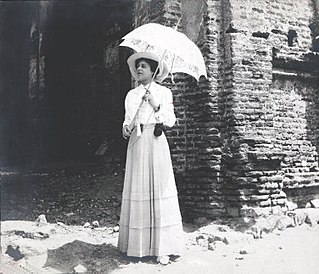
Grace Nail Johnson was an African-American civil rights activist and patron of the arts associated with the Harlem Renaissance, and wife of the writer and politician James Weldon Johnson. Johnson was the daughter of John Bennett Nail, a wealthy businessman and civil rights activist. She is known for her involvement with the National Association for the Advancement of Colored People (NAACP), the Heterodoxy Club, and many other African-American and feminist organizations. Johnson also supported and promoted African-American children's literature.

Elise Johnson McDougald, aka Gertrude Elise McDougald Ayer, was an American educator, writer, activist and first African-American woman principal in New York City public schools following the consolidation of the city in 1898. She was preceded by Sarah J. Garnet, who became the first African-American woman principal in Brooklyn, New York while it was still considered a separate city. McDougald's essay "The Double Task: The Struggle for Negro Women for Sex and Race Emancipation" was published in the March 1925 issue of Survey Graphic magazine, Harlem: The Mecca of the New Negro. This particular issue, edited by Alain Locke, helped usher in and define the Harlem Renaissance. McDougald's contribution to this magazine, which Locke adapted for inclusion as "The Task of Negro Womanhood" in his 1925 anthology The New Negro: An Interpretation, is an early example of African-American feminist writing.

Florida Ruffin Ridley was an African-American civil rights activist, suffragist, teacher, writer, and editor from Boston, Massachusetts. She was one of the first black public schoolteachers in Boston, and edited The Woman's Era, the country's first newspaper published by and for African-American women.

Eloise Alberta Veronica Thompson was an American educator, playwright, poet, and journalist. She married fellow journalist and activist Noah D. Thompson.

Zanzye Herterzena A. Hill was Nebraska's first African American female lawyer.

Idabelle Yeiser was an American woman poet, writer, and educator, who was part of the New Negro Movement in Philadelphia.

Melva Lorinda Price was an American educator and activist based in New York City. She taught Latin and other subjects for over thirty years in the New York public schools, and was active in Harlem with the YWCA, Alpha Kappa Alpha, the Hunter College Alumni Club, and other organizations.
Sarah A. Collins Fernandis was an American social worker, writer, and community leader, based in Baltimore, Maryland. She organized settlement houses in Washington, D.C., and Rhode Island, and worked for improved living conditions and healthcare for Black city residents.
Caroling Dusk: An Anthology of Verse by Black Poets of the Twenties: Anthology of Black Verse is a 1927 poetry anthology that was edited by Countee Cullen. It has been republished at least three times, in 1955, 1974, and 1995 and included works by thirty-eight African-American poets, including Paul Laurence Dunbar, Langston Hughes, Georgia Douglas Johnson, James Weldon Johnson, and Claude McKay. The anthology also includes biographical sketches of the poets whose work is included in the book.
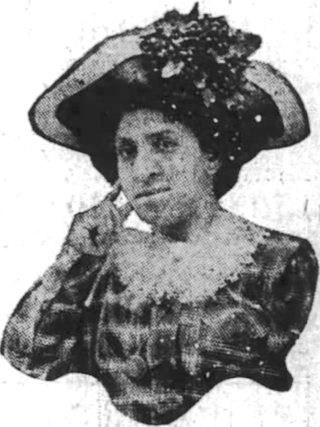
Lucy Jane Ross Henson was an American singer, bank clerk, music director, and clubwoman based in Harlem. Much of her life was occupied as the wife and later the widow of Matthew Henson. She spoke about his work, represented him at events, and preserved his effects.
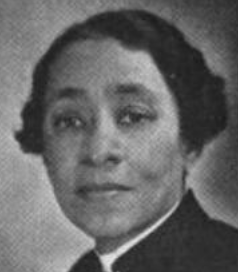
Grace Baxter Fenderson was an American educator and clubwoman based in Newark, New Jersey. A teacher at Monmouth Street School in Newark for over 40 years, Fenderson was a co-founder of the Newark chapter of the NAACP and served as president of the Lincoln-Douglass Memorial Association. In 1959, Fenderson received the Sojourner Truth Award from the New Jersey chapter of the National Association of Negro Business and Professional Women's Clubs (NANBPWC).
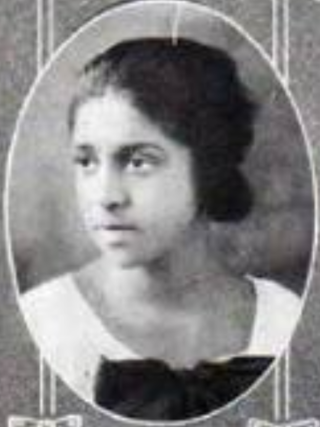
Ottie Beatrice Graham Jefferson was an American writer associated with the Harlem Renaissance cultural movement.

Arlein Ford Straw was an American music teacher and composer. She helped create The National Association for the Advancement of Colored People (NAACP) songbook.

















